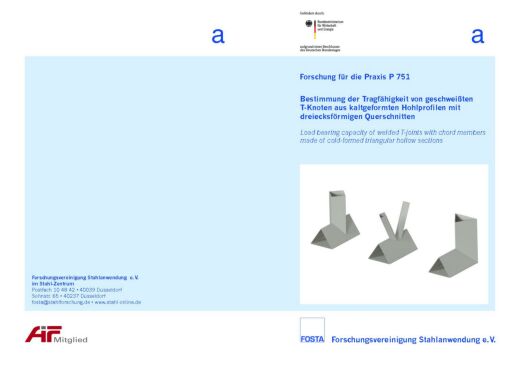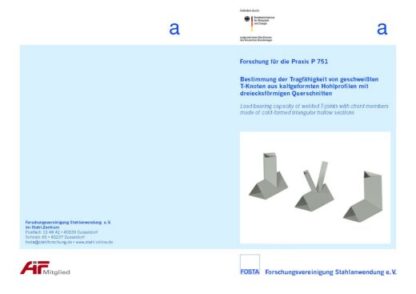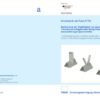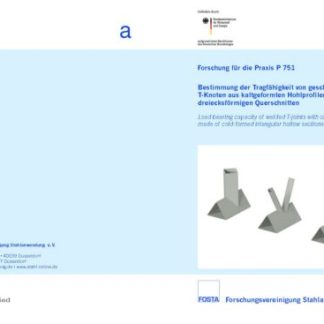Description
P 751 – Load bearing capacity of welded T-joints with chord members made of cold-formed triangular hollow sections
In the frame of this project, T-joints with chord members made of triangular hollow sections (THS) and braces made of rectangular hollow sections (RHS) are investigated. Besides technical and mechanical aspects architectural and economic aspects are covered also. Triangular hollow sections are newly developed. Used in open-web girders, they provide advantageous bearing-capacity of joints due to their high joint-rigidity. Design approaches for joints with triangular shaped chordsections are completely missing so far. Thus, the design of T-joints with THS simplifying follows the well-known design approach of the so-called “Bird Beak” and “Diamond Bird Beak” joints. The latter are similar to THS joints, but consist of chord members with quadratic hollow sections rotated 45° about their longitudinal axis.
The research therefore focuses on Tjoints with THS carrying out intensive analytical, experimental and numerical investigations to analyse the load-bearing properties in detail. New design approaches are derived accounting for the general design procedures of EN 1993-1-8 and considering the investigations of BBand DBB-joints in the nineties. Firstly, FE-models of T-joints with THS chords are developed and calibrated to the results of preliminary tests followed by FE- simulations and further parametric FE-studies. On the one hand, ultimate bearing capacities of T-joints are calculated. On the other hand, service loads are determined which comply with defined deformation criteria. The deformation criteria typically used for BB- and DBB-joints limits the local sections ´ indentations to a maximum value of 3% related to the chord widths b0 and the chord diameter d0, respectively. Due to the high rigidity of joints with THS the established 3% deformation criteria cannot be adopted. According to the numerical simulations carried out in this project a reduction to a limit of 1% b0 (section widths) is required, which is therefore proposed as a design criteria for THS. Secondly, analytical models of T-joints with THS chords and RHS braces are derived. An analytic model based on a plastic limit analysis according to DIN EN 1993-1-8 is introduced for braces with flanges parallel to the chord´s longitudinal axis. Regarding T-joints with braces rotated 45° about their longitudinal axis, the load capacity of T-joints is determined based on an effective widths´model according to DIN EN 1993-1-8.
The results of the new design approaches are verified by FEsimulations and tests. Finally, two case studies are prepared to study the technical, architectural and economic aspects of THS applications. Beside the use of structural steel S355 the use of high-strength steel S460 comes out to be economic. Further cost-analysisincludes the most relevant cost types such as material usage, welding and cutting work. Concluding, the use of THS sections is proved to be economically advantageous.
The research project (IGF-Nr. 16603 N) was carried out at Technischen Universität Dortmund, Lehrstuhl Stahlbau, at Karlsruher Institut für Technologie (KIT), Versuchsanstalt für Stahl, Holz und Steine and at Technischen Universität Dortmund, Lehrstuhl für Entwerfen und Industriebau. FOSTA has accompanied the research project work and has organized the project funding from the Federal Ministry of Economics and Technology through the AiF as part of the programme for promoting industrial cooperation research (IGF) in accordance with a resolution of the German parliament.
Only available in german language.
Authors:
D. Ungermann, B. Brune, P. Dissel, S. Herion, O. Fleischer, W.A. Noebel, O. Schmidt
Published in:
2015




